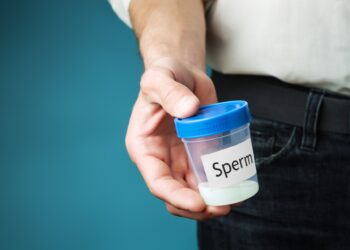Vasectomy reversal, a miraculous surgical technique reinstating male fertility by reconnecting vas deferens, opens a new chapter for couples desiring parenthood after a vasectomy.
Groundbreaking advancements, such as robotic vasectomy reversal, now offer precision, minimising risks and enhancing success rates.
This blog post will explore the different avenues of robotic vasectomy reversal and the benefits of undergoing each method.
Understanding The Concept Of Vasectomy Reversal
A vasectomy, a contraceptive method for men, blocks the vas deferens, tubes that deliver sperm. Think of it as a detour on the highway of sperm flow. A vasectomy reversal, on the other hand, is like removing that detour.
There are two main ways:
- Vasovasostomy reconnects the vas deferens, and
- Vasoepididymostomy rejoins the vas deferens to the epididymis
Both methods restore the highway for sperm to reach their destination.
Factors Influencing The Choice Of Surgical Technique
Several factors influence the choice between Vasovasostomy and vasoepididymostomy. These include the time elapsed since the vasectomy, the presence of sperm, scar tissue, the surgeon’s expertise, and the patient’s overall health, as outlined in the table below:
| Factors | Description |
| Time since vasectomy | If a long time has passed since the vasectomy, a more complex procedure like vasoepididymostomy might be required. |
| Presence of sperm | If sperm are found in the vas deferens during surgery, a more straightforward procedure likevasovasostomy is often chosen. |
| Scar tissue | The presence and extent of scar tissue can influence the choice of procedure. More scarring could necessitate a vasoepididymostomy. |
| Surgeon’s expertise | The surgeon’s experience and skill set are crucial in determining the technique. |
| Patient’s health | Underlying health conditions could affect surgical choices. For example, patients with a history of infections might require a more complex procedure. |
Vasectomy Reversal Surgical Procedure: Robotic Vasovasostomy
Here is a step-by-step breakdown of this surgical procedure.
- Induction: General anesthesia is administered to ensure patient comfort throughout the procedure. The operative site is appropriately prepped and draped.
- Access Creation: Precise scrotal incisions facilitate entry for the robotic arms, minimising tissue trauma.
- Identification: Enhanced 3D visualisation, inherent to the robotic system, assists in accurately pinpointing the occluded segments of the vas deferens.
- Occlusion Removal: Robotic accuracy is leveraged to excise the blocked segment meticulously.
- Anastomosis: Micro-surgical techniques enable the two viable ends of the vas deferens to be sutured, re-establishing the seminal pathway.
- Verification: Post-reanastomosis, a vasal fluid sample is aspirated to validate the anastomosis patency and assess sperm presence.
- Closure: The incisions are closed with suitable sutures, and the robotic instruments are withdrawn.
- Recovery: Following extubation, patients are transferred to a recovery suite for close post-operative monitoring. Discharge is typically planned for the same day with a comprehensive post-operative care plan.
This protocol underscores the outpatient nature of the robotic vasectomy reversal, emphasising quick patient recovery and reduced hospital stay.
Potential Benefits And Improved Outcomes Of Robotic Vasovasostomy
Robotic vasovasostomy breathes new life into fertility restoration. This tech-advanced procedure offers superior precision, reducing tissue damage and post-operative complications.
Enhanced 3D visualisation empowers surgeons to identify and connect the vas deferens more accurately. The result? Higher success rates.
Plus, it’s less invasive, meaning quicker recovery times and less discomfort. Robotic vasovasostomy offers a smoother, more successful journey to regaining fertility.
Surgical Procedure: Robotic Vasoepididymostomy
Vasoepididymostomy might be the preferred method in vasectomy reversal if:
- It’s been a long time since the vasectomy, increasing the chance of blockages downstream.
- There’s no sperm in the vas deferens during surgery, suggesting a blockage beyond the initial vasectomy site.
- The previousvasovasostomyfailed to restore fertility.
- There’s significant scarring or damage to the vas deferens.
- Conditions like epididymal blowouts are present, where pressure build-up causes ruptures in the epididymis due to blocked sperm flow.
Advantages Of Using Robotic Assistance In Vasoepididymostomy
Robotic assistance in vasoepididymostomy brings many benefits, such as precision, reduced trauma, and better visualisation, making it a top pick for complex fertility restoration. However, it’s not all rosy.
It requires highly specialised skills, meaning you’ll need a surgeon who’s well-versed in robotics. Plus, it may cost more than traditional surgery, and not all insurance plans cover it.
Benefits Of Vasectomy Reversal
Vasectomy reversal offers several benefits, including.
Restoration of Natural Fertility: Vasectomy reversal primarily serves to reestablish natural fertility, providing men with the ability to conceive without dependence on assisted reproductive interventions.
Economic Efficiency: From a long-term perspective, vasectomy reversal may prove more economical than repeated cycles of IVF or other assisted reproductive technologies.
The prospect of Multiple Conceptions: Successful vasectomy reversal offers the possibility for subsequent spontaneous pregnancies, eliminating the need for repeated medical interventions.
Physiological Improvements: Post-vasectomy testicular discomfort, reported by some patients, can potentially be alleviated following successful reversal surgery.
Psychological and Emotional Advantages: Restoring fertility can confer significant psychological benefits, augmenting a sense of masculinity, enhancing self-esteem, and fostering stronger relational bonds.
Advancements and Innovations in Robotic Vasectomy Reversal
The innovative RoboticScope, a hands-free digital exoscope, was recently employed in Australia to reverse vasectomy by the esteemed urologist Dr Katelaris. This groundbreaking platform marks the advent of a novel phase in micro surgeries.
The RoboticScope system is operated via a Head Mounted Display (HMD), which synchronises with the surgeon’s head movements and is supplemented by a foot pedal. It facilitates three-dimensional visualisation, enhancing operative precision and control.
Concurrently, real-time imaging captured by the microscope is relayed onto a monitor, allowing the entire surgical team to participate in the operative process, thereby fostering collaboration and surgical success.
Final Words
As we navigate the future of male fertility surgeries, the potential of robotic techniques continues to broaden our horizons. We invite our colleagues in healthcare to delve into these technological advances, opening doors to enhanced precision and improved patient outcomes.
Robotic-assisted vasectomy reversal, in particular, stands as a beacon of progress, bringing forth transformative changes in surgical outcomes. Embracing these advancements will ensure we continue to provide the best care possible for our patients.







